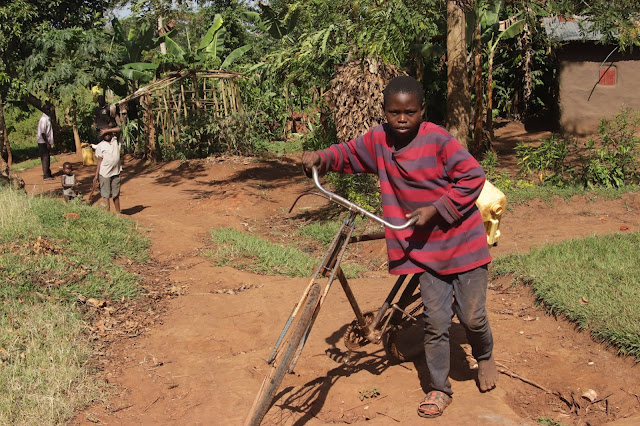Day 9 - The idyllic countryside
Anyone who has ever inhaled the scent of Africa, is hooked for life. It is the mantra of every Africa lover. That smell, I can't describe it. It is a familiar feeling, a safe feeling, a feeling of coming home. A feeling that everything is right. Perhaps it is the realization that human life originated on the black continent and that this is the sacred source of our existence.
In Africa I also feel close to my grandfather who I lost way too early. I think back of the stars in his eyes when he told me about his life in Africa when I was a little girl. He was stationed by the Belgian army in the turbulent run-up to 1960 in the Belgian Congo. He always spoke warmly about the population and Africa. Maybe it's his stories about that distant continent that fueled my love of travel in general and Africa in particular.
I smell and feel the scent and love for Africa mainly in the countryside. Life as it is on the poor continent, far away from the Big Five, far away from those impressive beautiful animals, for many the reason for a trip through Africa. The African countryside consists of sweeping landscapes with small villages constructed of mud huts, paddocks made of cast-away aluminum or stone structures. Along the public road you will find small market stalls where the crops of a private piece of land are sold. Delicious pineapple, tasty tomatoes, sugar cane, exotic mango and papaya, small and large bananas, refreshing melons and sweet potatoes. Everything Mother Nature yields is sold here. This is often done by women who participate this way in the economic life.
Once in a while the road is blocked by crossing cattle. It is driven from one grassland to another. Children try to have fun with homemade toys: cars made of iron wire or fool around with a rubber band that they propel with a stick. A lone cyclist carries gigantic bunches of bananas or bags of flour while women are on their way to and from the water source with water cans on their heads. In other words, the real Africa, the real life, but especially the tough life. But always with a smile on the face. Not only the wildlife parks are interesting to drive around, you don’t know where to look outside the parks too.
Besides coffee, Uganda grows a lot of tea. These tea plantations can be found throughout much of the country and provide a green touch to the landscape. It is harvest time and men and women, each with a large wicker basket, are picking the field bent over the tea leaves. Tea pickers are day laborers, they offer their services every day. Who also is employed on the tea plantations are prisoners. They are very recognizable by their very bright yellow overalls. They spend their day here under supervision. In addition to coffee and tea, you will also find many magical banana plantations with bunches of crooked yellow bananas on the shady trees.
The turbulent 70s in Uganda caused a lot of suffering to the population, but this period also had a major impact on the animals. Even in the 80s and 90s, the game parks were used as the personal pantry of the belligerent armies. The result was a sharply declining animal population due to mass slaughter. In addition, the rhino has been poached extensively throughout Africa for many years. In Asia, medical powers are attributed to the horn and it is considered very valuable. The horn of a rhinoceros is nothing more than the horn in our nails, but apparently the Asians don’t care for that. The horn trade remains a lucrative business. Despite all measures, poaching remains a huge problem in Africa. The consequences of civil war and poaching resulted in the extinction of the rhinoceros in Uganda since 1983.
In 1998 the rhino was reintroduced. In the armed protection of a reserve, a breeding program was started with white rhinos donated by Kenya and the US. From these two rhinos a first calf was born, pointly called Obama ;-). Meanwhile, nearly twenty white rhinos live in the park. The result of day and night protection of the animals against poachers. It is the dream to release these animals in the wildlife parks when there sis sufficient population. At the moment it is not possible to see the Big Five in the wild in Uganda.
But with a visit to the Ziwa Rhino Sanctuary, you can observe the animals up close. Moreover, this can be done on foot, which always provides added value. My heart always jumps a beat when I can see the animals so close and unprotected. You feel the real Africa. You smell the scent of Africa…








Comments
Post a Comment